
You find this sundial on a building of the Kufstein Fortress. Kufstein is a place in the Austrian state of Tyrol. Remarkably, this sundial shows a large sailing ship in a region which has no coast to the sea.
Browse through your travel destination!

You find this sundial on a building of the Kufstein Fortress. Kufstein is a place in the Austrian state of Tyrol. Remarkably, this sundial shows a large sailing ship in a region which has no coast to the sea.

This fresco with a sundial is located on a wall of the Old Salzburg University. Its creator was Georg Jung (1899-1957). The depictions refer to the four faculties of that university in 1622.
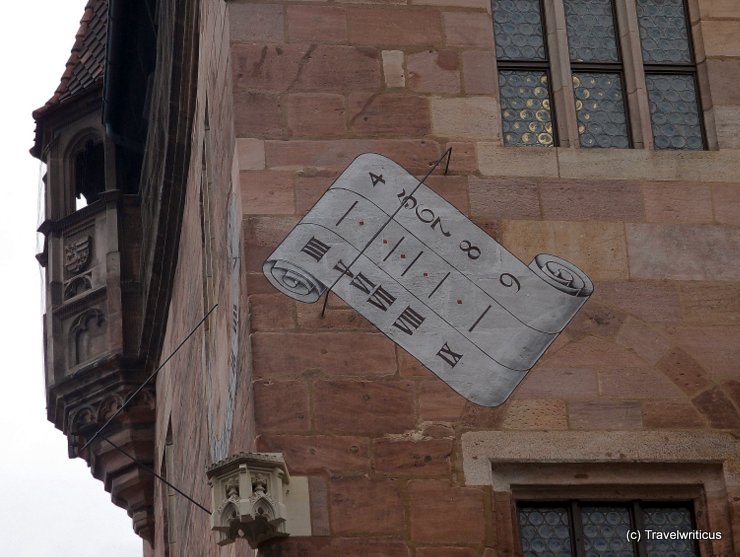
This sundial is a decoration on the Nassauer Haus in Nuremberg, a medieval residential tower in the city centre. I love the sundial’s design, which reminds me of a scroll. Around the corner, there is another sundial with a commonplace design.

After leaving the railway station Mistelbach/Stadt I came across one of my first sundials in Austria. The piece placed on a private home in Lower Austria shows local agricultural products like corn and grapes. The German phrase ‘’Nuetz die Zeit!’ reminds people to use their time carefully.
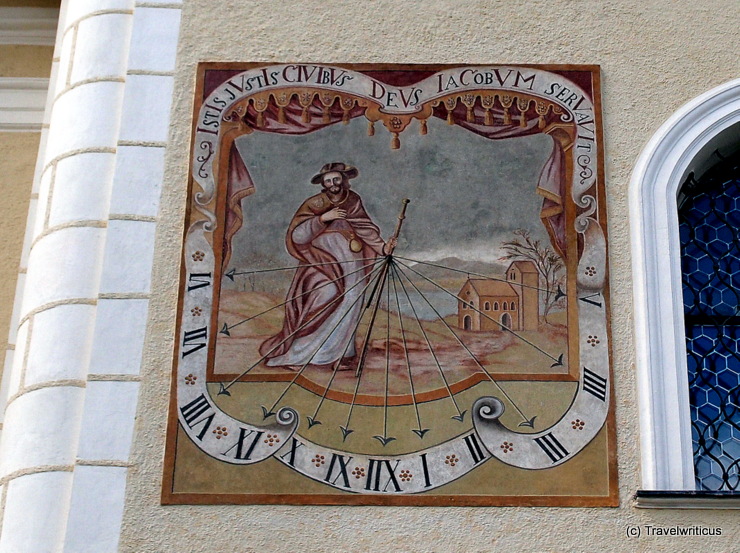
This sundial, located at the parish church of Tamsweg depicts James, son of Zebedee (Jakobus der Ältere) who is the patron of this church. Tamsweg is the largest town of the Lungau region in the Austrian state of Salzburg.
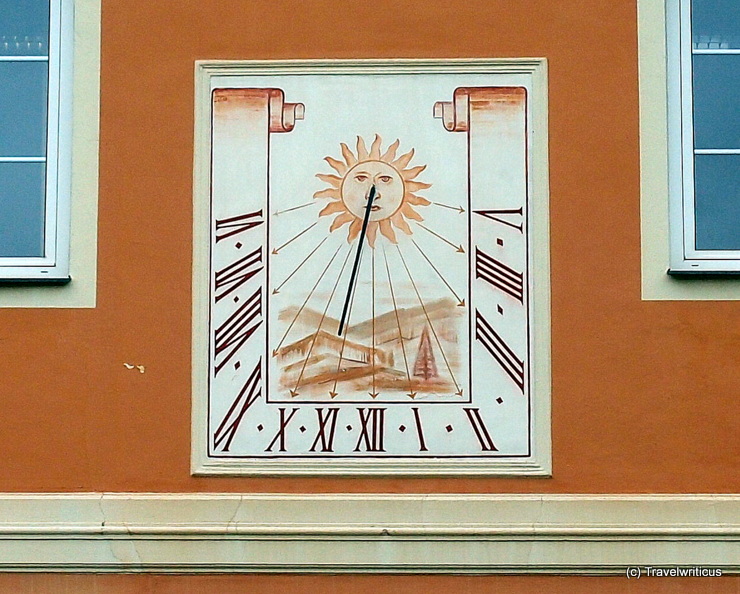
This sundial is located at a building generally known as Hofrichterstöckl. The 17th-century edifice is covered with a hip roof and offers an early Baroque entrance portal labelled with the year of construction in 1640.
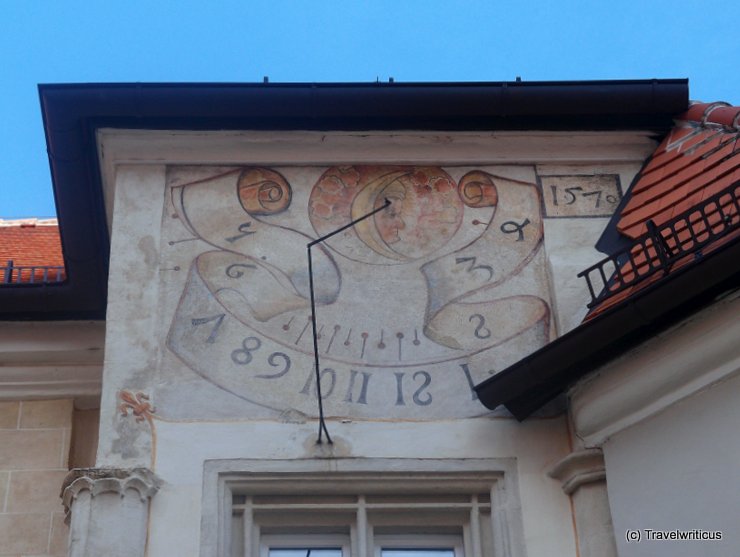
This sundial dated with the year 1570 is shown at the Leopoldihof (St Leopold’s Courtyard) of Stift Klosterneuburg (Klosterneuburg Abbey).
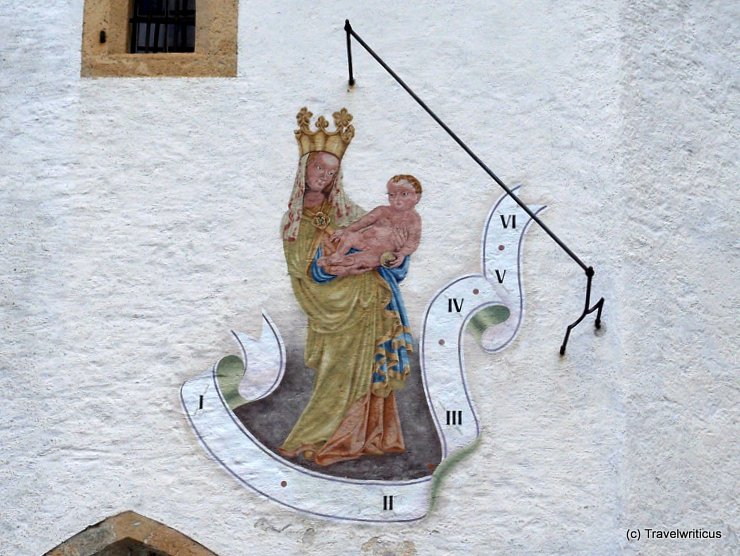
Sundial at the Dechantskirche in Altenmarkt. The figure represents a Madonna for which the church is famous for. One can see a copy of this statue at one of the side altars in the church.
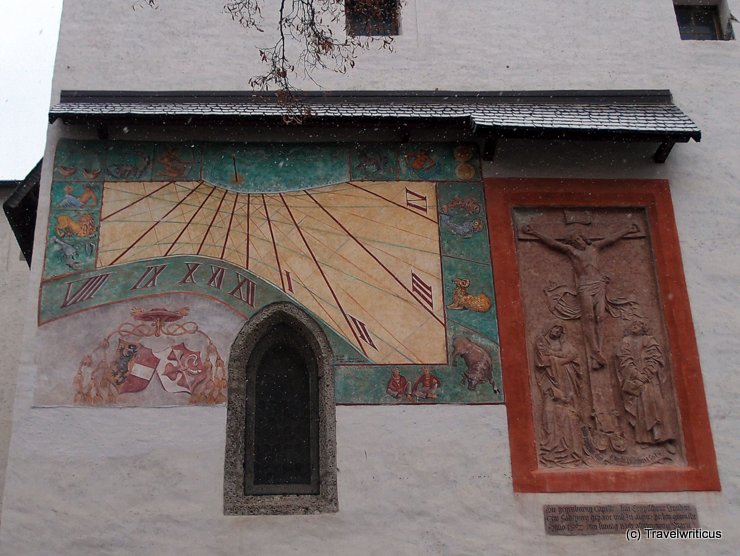
This sundial is situated at the St George’s Chapel of Hohensalzburg Fortress (Festung Hohensalzburg). It shows the emblems of the Archbishopric of Salzburg and Archbishop Matthäus Lang von Wellenburg. The original sundial was created in the 16th century but today one can see a kind of reconstruction built in 2001.
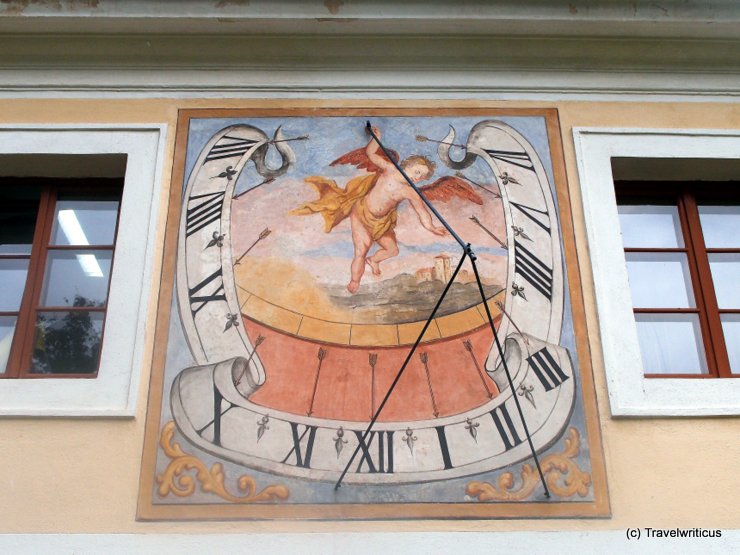
Next to the room where I took a workshop in creating hand-made paper I came across this sundial. It is placed at the court of Geras Abbey (Stift Geras). I wonder which castle is shown at that sundial?
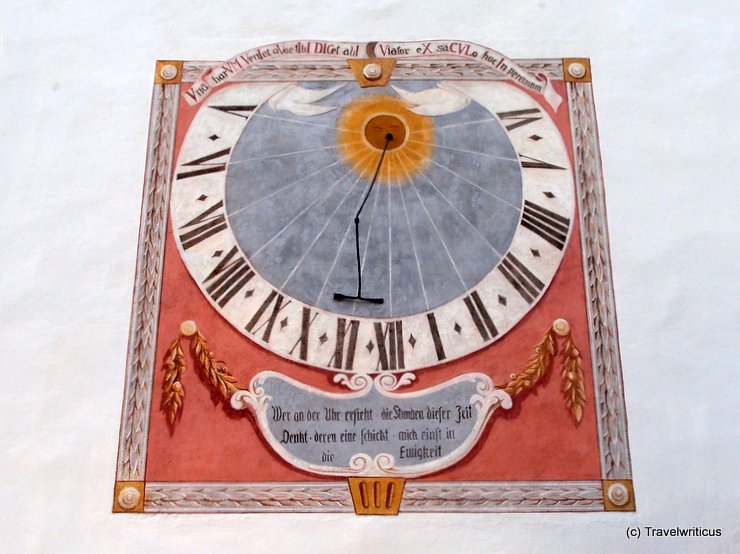
Colorful sundial seen at a church in Haus. The phrase one can see below the sundial is a kind of memento mori: “Wer an dieser Uhr ersieht die Stunden dieser Zeit denkt deren eine schickt mich einst in die Ewigkeit”.
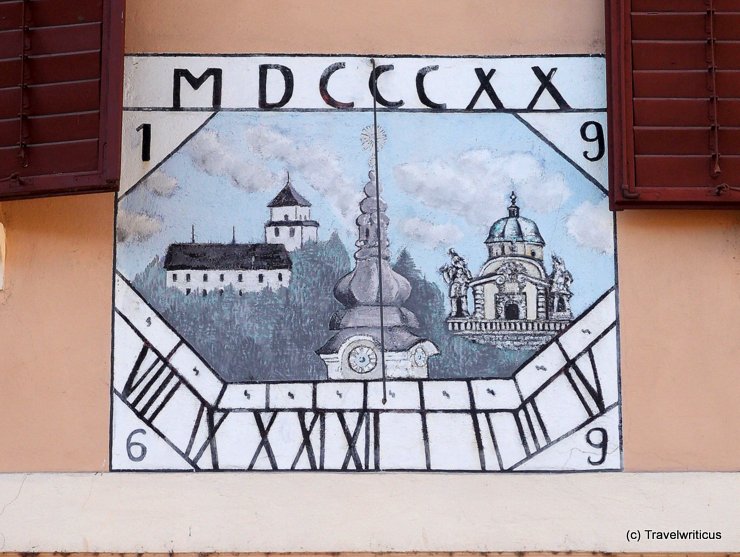
Sundial at the market place of Ehrenhausen showing the most important sights of the city. On the left side one can see Schloss Ehrenhausen and on the right side there is the mausoleum of Ruprecht von Eggenberg. The steeple refers to the church of Ehrenhausen.